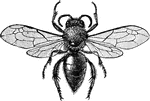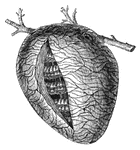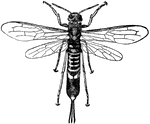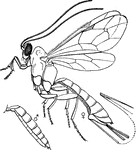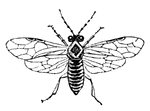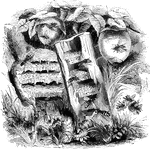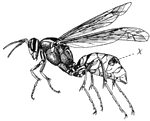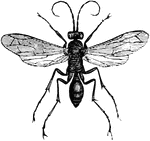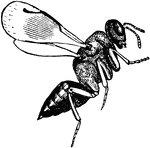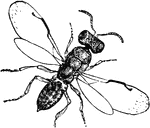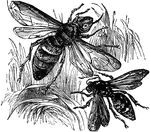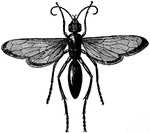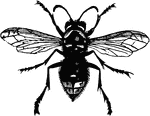Clipart tagged: ‘wasp’
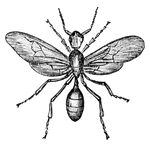
Red Ant
The red ants, here a winged male, are produced in great numbers at particular times of the year.

Red Ant
The red ants, here a wingless neutered male, are produced in great numbers at particular times of the…

Velvet Ant
Also known as cow killers, are not actually ants but a type of wasp. they get their name from their…
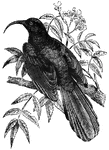
Namaqua Bee-Eater
The namaqua bee-eater, native to Western Africa. Its diet consists of insects, particularly bees and…
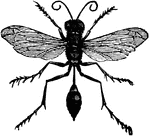
Mud Dauber
Mud Daubers plaster their nests against out-houses, in all sorts of corners and under all sorts of shelters
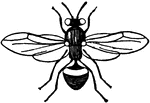
Gall-fly
Gall-fly is a name applied to the members of the family Cynipidae, which are not flies, but are related…
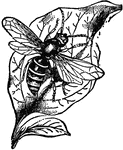
Hornet
"Hornet is the largest species of wasp found in America. The thorax is mostly black; the abdomen is…

Ichneumon
This female parasitic wasp has a strong boring ovipositor for laying eggs in holes she drills in trees.

Ichneumon
This female parasitic wasp has a strong boring ovipositor for laying eggs in holes she drills in trees.

Ichneumon Fly
The Ichneumonoidea are insects classified in the hymenopteran suborder Apocrita. The super family is…

Sarcostyles from Wasp
Sarcostyles from the wing muscle of a wasp. A, A'. A sarcostyles showing degrees of retraction. B. A…
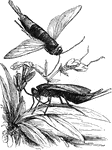
Sawfly
"On the continent of Europe the Sirex gigas often appears in immense numbers, and does great…
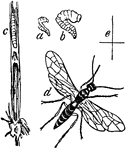
Corn Sawfly
"Corn Sawfly: a, maggot, natural size; b, maggot, magnified; c, the maggot in its ear in the stem of…

Securifera
The securifera or saws of the sawfly (Lophyrus suffusus), an insect related to the wasps and bees.
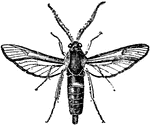
Sesiidae
"Clear-winged moths, Sesiidae, day-fliers, and looking more like bees, wasps, and ichneumons which they…

Wasp
A genus of insects somewhat resembling bees, but differing fromm them in having a more powerful sting,…
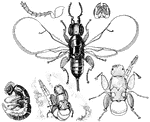
Wasp
This illustration shows a Blastophaga grossorum: a, adult female with wings extended, seen from above;…

Parasite Wasp Cocoon
The cocoon of Sigalphus curculionis, a species of parasitoid wasps. These insects use other insects…

Parasite Wasp Larva
The larva of Sigalphus curculionis, a species of parasitoid wasps. These insects use other insects as…

Parasite Wasp Pupa
The pupa of Sigalphus curculionis, a species of parasitoid wasps. These insects use other insects as…

Female Adult Parasite Wasp
The female adult of Sigalphus curculionis, a species of parasitoid wasps. These insects use other insects…
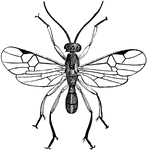
Male Adult Parasite Wasp
The male adult of Sigalphus curculionis, a species of parasitoid wasps. These insects use other insects…

Chalcid Wasp
Eupelmus floridanus is a species of Chalcid wasp, a parasitic insect in the Eupelmidae family.
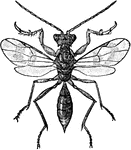
Embolimus Wasp
Embolimus americanus is a species of wasp belonging to the Proctotrupoidea superfamily of various wasps.
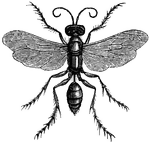
Spider Huntress Wasp
Chalybion caeruleum. "A family of fossorial hymenopters, or digger wasps. The prothorax is narrowed…
